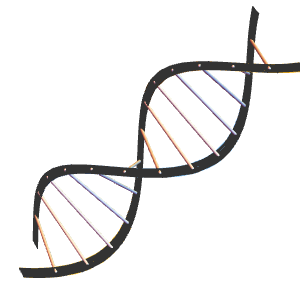Common DNA Subsequence of Genes
The Version 7 functions LongestCommonSequence and LongestCommonSubsequence are now supplemented by their positional counterparts LongestCommonSequencePositions and LongestCommonSubsequencePositions.
Compare the DNA sequences of random genes of the Y chromosome.
In[1]:=
genes = RandomSample[GenomeData["ChromosomeYGenes"], 4]Out[1]=
Group these genes by pairs.
In[2]:=
With[{subsets = Subsets[genes, {2}]},
Table[pair[i] = subsets[[i]], {i, 1, Length[subsets]}]];Define a function that will get the positions of the longest continuous DNA sequence common to each pair, together with the sequence itself.
In[3]:=

commonDNASubequence[{g1_, g2_}] :=
With[{d1 = GenomeData[g1], d2 = GenomeData[g2]}, {{g1, g2},
LongestCommonSubsequencePositions[d1, d2],
LongestCommonSubsequence[d1, d2]}]Longest common subsequence of the first pair.
In[4]:=
commonDNASubequence[pair[1]]Out[4]=
Longest common subsequence of the second pair.
In[5]:=
commonDNASubequence[pair[2]]Out[5]=
Longest common subsequence of the third pair.
In[6]:=
commonDNASubequence[pair[3]]Out[6]=
Longest common subsequence of the fourth pair.
In[7]:=
commonDNASubequence[pair[4]]Out[7]=

Longest common subsequence of the fifth pair.
In[8]:=
commonDNASubequence[pair[5]]Out[8]=
Longest common subsequence of the sixth pair.
In[9]:=
commonDNASubequence[pair[6]]Out[9]=























